Are disc brakes or rim brakes the ultimate brake choice for bike touring? Here's a look at the pros and cons of rim brakes and disc brakes.
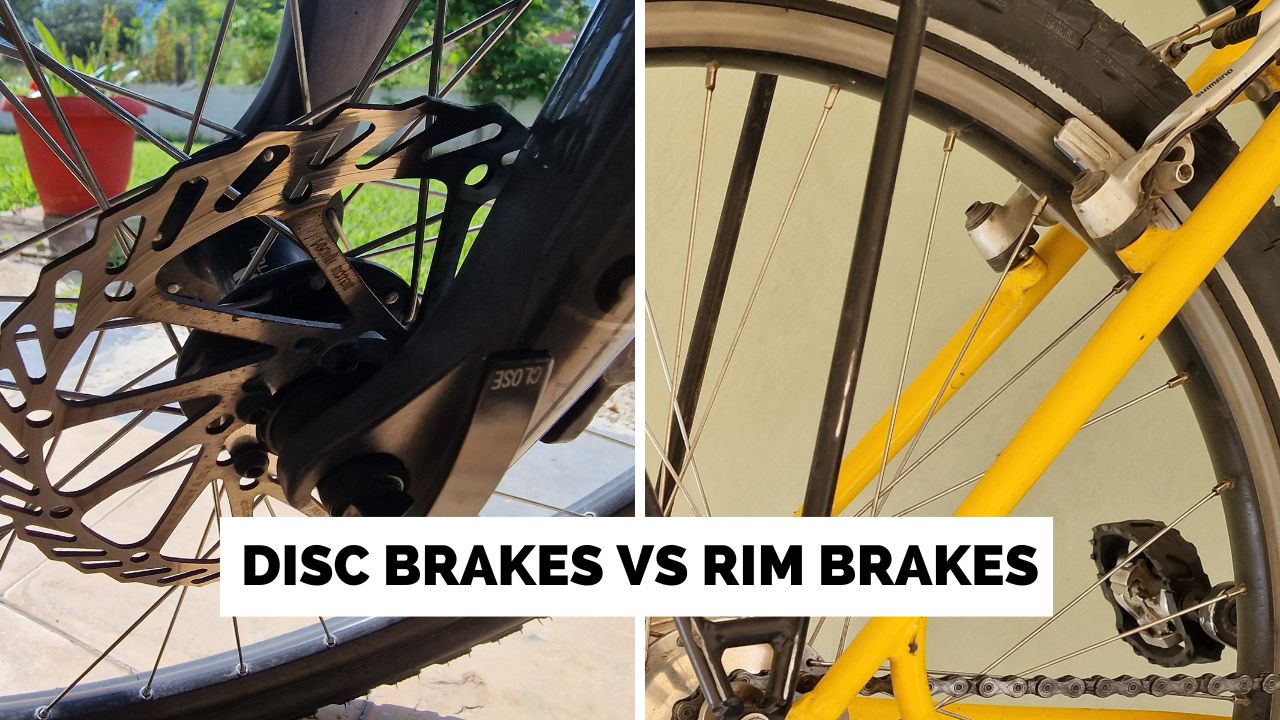
Rim Brakes vs Disc Brakes For Bicycle Touring
Have you ever wondered what the real difference is between disc brakes vs rim brakes, and which one would suit your cycling needs better?
While disc brakes outperform rim brakes in almost every area, it doesn't necessarily make them the best choice for bike touring. That's because there are other things to consider, such as availability of spare parts, ease of repairs, and frame compatibility.
Personally, I prefer rim brakes for my touring bikes. This is because my experiences of cycling in quite remote areas and developing countries have led me to the conclusion that the simpler a bike and its components are, the easier it is to maintain, repair, and source parts for.
For example, even in the dustiest bike shop in Peru, you can find brake pads for rim brakes, brake shoe assemblies, and the other nuts and bolts needed for those inevitable repairs after a few months of cycling.

Trying to replace or repair disc brake rotors, and disc brake systems in developing countries is an exercise in patience, and often involves having to get items shipped to you which takes time and of course is not cheap either.
That said, for people who cycle solely in parts of the world where there is a well stocked bike shop every 100 miles, disc brakes make total sense and are an obvious choice.
If you're wondering what type of brakes you should have for your touring bike (assuming you even have a choice nowadays!), my advice is to future proof your decision. Where do you plan to ride and bike tour in the future?
Also, it's a good idea to see if your local bike shop stocks spares of the braking system you decide upon. If they don't, it might not be a good choice when bike touring!

Pros and Cons of Disc Brakes and Rim Brakes
- Disc brakes offer superior performance, control and tire options, but are heavier & more expensive.
- Rim brakes are lightweight & cheaper, but not as effective in wet conditions or for heavy loads.
- Rotors for disc brakes come in different sizes and mounting types. Will bike shops stock the spares you need?
- You can find spares for rim brakes everywhere in the world – bikes shops, garden sheds and garages!
Related: Fixing Bike Problems
Understanding Disc and Rim Brakes
As a cyclist, you might have come across two main types of braking systems: disc brakes and rim brakes. Disc brakes use calipers that apply force to rotors, while rim brakes use pads that press against the wheel rim.
But how do these systems differ in performance, compatibility, and maintenance? Let's explore the world of disc brakes and rim brakes in more detail.
Disc Brakes
Disc brakes consist of a rotor attached to the hub near the center of the wheel and a caliper that pushes brake pads against the rotor, creating friction to slow down the bike.
Disc brakes are of two types – mechanical and hydraulic. Both have their own advantages and disadvantages. Mechanical disc brakes utilize a cable to transfer force from the brake lever to the caliper, while hydraulic disc brakes use fluid-filled lines to convey the force, resulting in a smoother and more efficient braking experience.

The advantages of disc brakes include more stopping power, better control, and the ability to accommodate wider tires. A good choice for Fat Bike enthusiasts, but also something to consider when bikepacking.
Additionally, they are less affected by rain and water, which reduces the chances of brake pads slipping and ensures consistent performance in various weather conditions. One negative though, is that oil on the brake discs can cause a problem – so be careful when oiling your chain with spray (which I hope you don't, but some people do!).
Finally, disc brakes can be more expensive and require additional maintenance compared to rim brakes.
Related: Best Bike Touring Tires
Rim Brakes
Rim brakes, on the other hand, use pads that press against the wheel rim, slowing down or stopping the bike. There are several types of rim brakes, such as V-brakes, cantilever, and caliper brakes, among others.
Rim brakes are generally lighter and more affordable than disc brakes, making them a popular choice for casual riders.
However, rim brakes have some limitations. They can cause rim wear over time due to the friction between the brake pads and the rim.
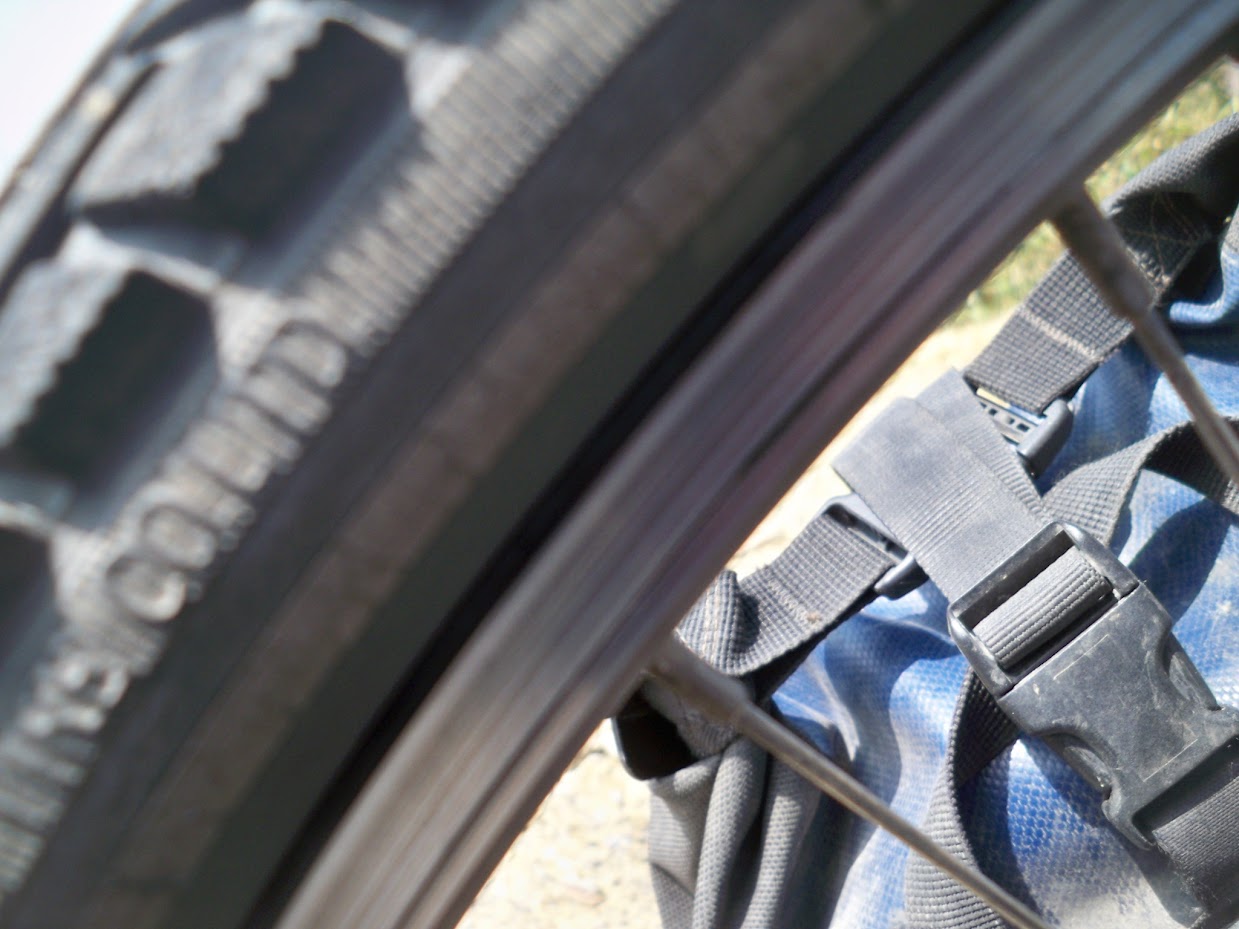
In wet conditions, their braking performance may suffer as water can cause the brake pads to slip on the rim, weakening the braking power.
On my Thorn Nomad MKII touring bicycle, I have ceramic rim brakes. These are about as good as it gets, and comparable with disc brakes for stopping power.
Related: Why does my bike wheel wobble?
Brake Performance Comparison
Now that we've covered the basics of disc and rim brakes, let's dive into a head-to-head comparison of their braking performance.
Disc brakes are known for their consistent and responsive stopping power, better modulation, and improved performance in wet conditions.
But how do they fare against rim brakes when it comes to stopping power, modulation, and weather conditions? Let's find out.
Stopping Power
One of the key factors to consider when comparing braking systems is stopping power. Disc brakes offer more reliable and responsive stopping power than rim brakes.
This is due to the friction created by the caliper pressing the brake pad against the rotor. Hydraulic disc brakes, in particular, require significantly less force on the lever compared to rim brakes, making them more efficient and easier on your muscles during extended braking periods.
Larger disc brake rotors also contribute to increased stopping power, as they provide more surface area for the brake pads to act on. In comparison, rim brakes may not offer the same level of stopping power, especially in wet conditions where the brake pads can slip on the rim.
Modulation
Modulation refers to the ability to control the amount of clamping force on a brake with a given amount of input, allowing the rider to precisely control how much force is applied with each brake input.
Disc brakes offer better modulation than rim brakes, as they provide more powerful braking and less susceptibility to wet or muddy conditions, resulting in improved braking control.
Rim brakes, on the other hand, may not provide the same level of modulation as disc brakes. This can make it more challenging for riders to fine-tune their braking force, which may be especially noticeable in technical riding situations where precise control is crucial.
Weather Conditions
Weather conditions can significantly affect the performance of braking systems. Disc brakes generally perform better in wet weather than rim brakes, as they maintain consistent stopping power and control even when exposed to rain and water.
The design of disc brakes ensures that water and dirt are quickly cleared away from the braking surface, minimizing the impact of adverse conditions on performance.
Rim brakes, however, may suffer in wet conditions, as water can cause the brake pads to slip on the rim, reducing their braking power. This can lead to less predictable performance and potentially risky situations, particularly when riding in challenging terrains or adverse weather conditions.
Related: Why is my bike hard to pedal?
Bike Compatibility and Setup
Selecting the right brake system for your bike not only depends on performance factors but also on compatibility and setup considerations. Disc brakes require specific fittings on the frame and wheels, while rim brakes have different compatibility requirements.
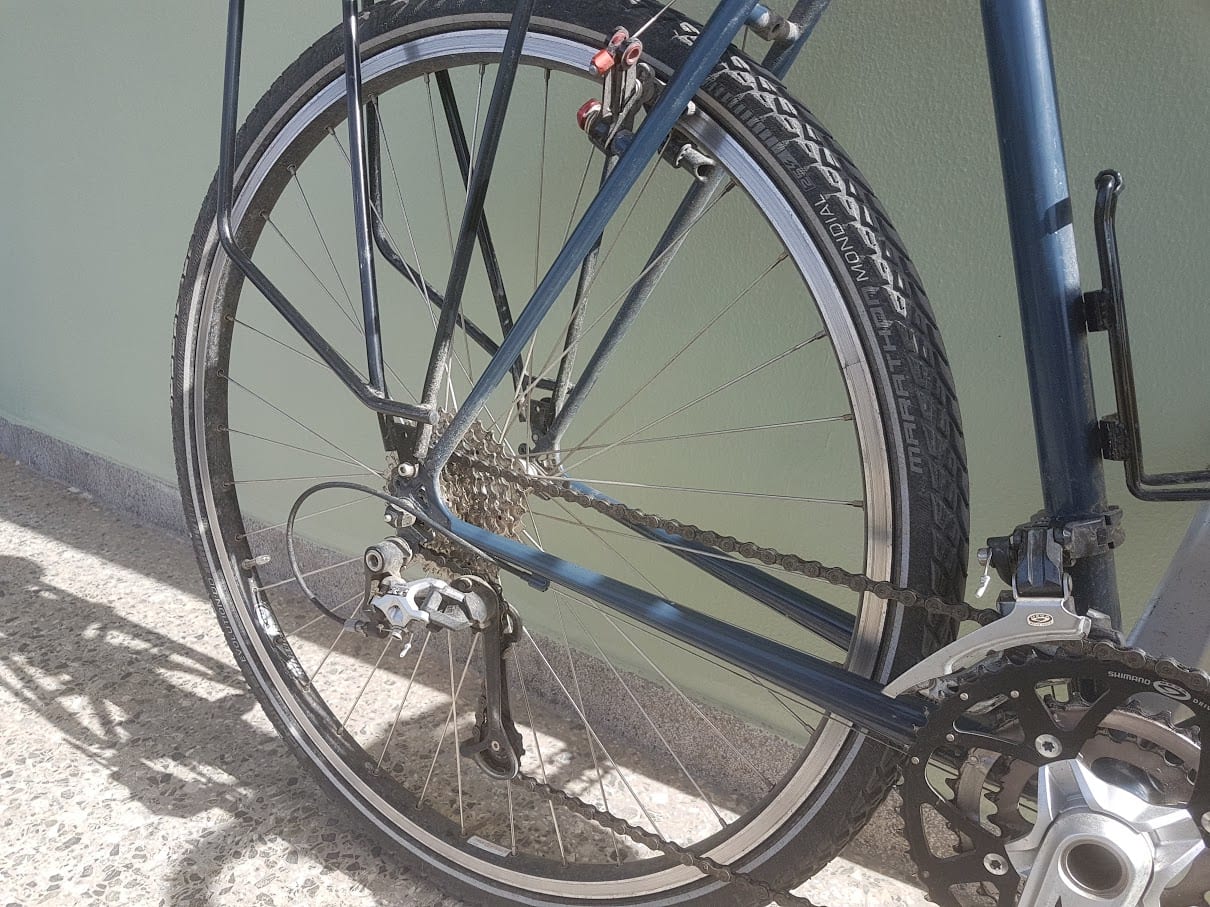
In this section, we'll discuss the various aspects of bike compatibility and setup for both disc and rim brakes.
Frame Compatibility
When it comes to frame compatibility, disc brakes require specific fittings on the frame and fork for the caliper. The bike frame should ideally be designed for disc brakes to ensure optimal performance and compatibility.
On the other hand, rim brakes usually limit how tall and wide the tires can be, whereas disc brakes, mounted directly to the frame and fork, don't have that issue.
Although it is possible to convert a rim brake-compatible bike frame to use disc brakes by adding a disc brake mount, this may not be the most practical option for all riders.
In general, it is important to ensure that your bike frame can accommodate the brake system you prefer, whether it's disc or rim brakes.
Wheel Compatibility
Wheel compatibility is another crucial factor to consider when choosing between disc and rim brakes. Rim brake wheelsets must have a braking surface to operate correctly. Disc brake wheels however, do not require one. This means that if you're switching from rim brakes to disc brakes, you'll need to invest in new, disc-compatible wheels as well.
In addition, the type of rotor required for wheels with disc brakes is essential to consider. The rotor is the perforated ring that goes around the wheel hub, and it plays a significant role in the braking process. Ensuring that your wheels are compatible with your chosen braking system is vital for optimal performance and safety.
Brake Setup and Maintenance
Setting up and maintaining your brakes is an important aspect of bike ownership. Rim brakes are generally easier to maintain than disc brakes, as they require fewer tools and less expertise.
Simple tasks such as replacing brake pads can be quickly accomplished with minimal effort. Additionally, consumables for rim brakes typically cost less than those for disc brakes and are a lot easier to find no matter where you are in the world.
On the other hand, disc brakes can be more complicated to service and usually require more tools and know-how than rim brakes. For riders who are less mechanically inclined or who prefer a simpler brake system, rim brakes may be a more suitable option.
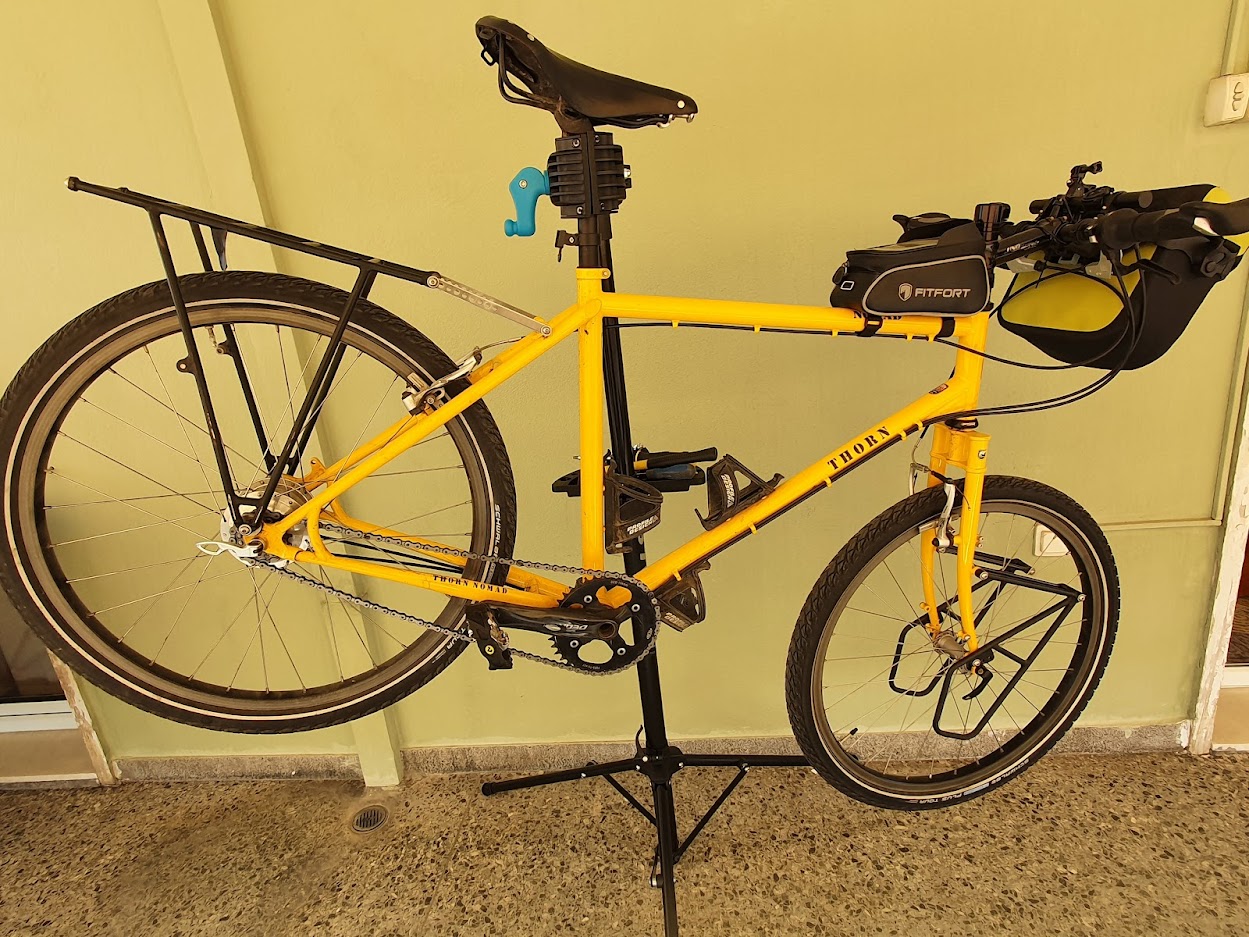
Pros and Cons: Disc Brakes vs Rim Brakes
Now that we've explored the various aspects of disc and rim brakes, it's time to summarize their pros and cons. Disc brakes offer better performance, more reliable and responsive stopping power, and better modulation, but they are heavier and more expensive.
On the other hand, rim brakes are lighter and cheaper but perform worse in wet conditions and may cause rim wear over time. In the following subsections, we'll delve deeper into the advantages and disadvantages of each system.
Advantages of Disc Brakes
Disc brakes provide numerous benefits for riders seeking enhanced performance and control. Their superior stopping power and improved braking control make them an excellent choice for performance riders tackling challenging terrains. Additionally, disc brakes are less affected by rain and water, ensuring consistent performance in various weather conditions.
Another advantage of disc brakes is their ability to accommodate wider tires, providing better traction and stability for riders. This feature is particularly beneficial for off-road cyclists and those who require a smoother ride on rough surfaces.
Disadvantages of Disc Brakes
While disc brakes offer many advantages, they also come with some drawbacks. One of the main disadvantages of disc brakes is their weight and cost, as they tend to be heavier and pricier than rim brakes. This may be an important consideration for riders who prioritize weight savings or budget constraints.
Moreover, disc brakes can be more complex to set up and maintain compared to rim brakes, requiring additional tools and expertise. For riders who prefer a more straightforward and accessible braking system, rim brakes may be a more suitable option.
Advantages of Rim Brakes
Rim brakes offer several advantages for casual riders, including their lighter weight and affordability. These features make rim brakes an attractive option for those who prioritize simplicity and budget-friendliness. Furthermore, rim brakes provide sufficient stopping power for most casual riding situations, making them a reliable choice for many cyclists.
In addition to their lightness and affordability, rim brakes are also easier to maintain than disc brakes, requiring fewer tools and less expertise. This can be particularly appealing to riders who prefer a more straightforward approach to bike maintenance.
Disadvantages of Rim Brakes
Despite their advantages, rim brakes also have some limitations. One of the main disadvantages of rim brakes is their reduced performance in wet conditions, as water can cause the brake pads to slip on the rim, weakening the braking power. This can lead to less predictable performance and potentially risky situations, particularly when riding in challenging terrains or adverse weather conditions.
Additionally, rim brakes can cause rim wear over time due to the friction between the brake pads and the rim. This wear can lead to a decrease in braking effectiveness and may eventually require the replacement of the wheel rim, adding to the overall cost of maintenance.
Choosing the Right Brake System for Your Needs
Ultimately, the choice between disc brakes and rim brakes depends on your individual needs, preferences, and riding style. It might even depend on the type of bike frame you have.
Performance riders who tackle challenging terrains and require more stopping power and control may benefit from disc brakes, while casual riders who prioritize simplicity and affordability may prefer rim brakes.
In the following subsections, we'll provide recommendations based on different rider profiles and requirements.
Disc Brakes for Performance Riders
For performance riders, such as off-road cyclists, loaded touring bikers, and those who ride steep technical terrains, disc brakes are the ideal choice when cycling in developed countries.
Their enhanced stopping power, improved braking control, and wider tire options provide the necessary performance advantages to tackle challenging conditions with confidence.
Moreover, disc brakes perform consistently in various weather conditions, ensuring dependable braking performance even during wet or muddy rides.
Heavier riders or those carrying a heavy load, such as bicycle tourists and bikepackers, can also benefit from the increased stopping power provided by disc brakes.
The superior performance of disc brakes can offer increased safety and control when carrying additional weight on the bike.
The one downside is availability of parts in the developing world, and the ease of which rotors can become bent or damaged. Bike touring can take its toll on bicycles, gear and equipment, and having robust, solid, easy to repair and maintain rim brakes might be an advantage.
Rim Brakes for Casual Riders
For casual riders who primarily ride on paved roads and do not require the additional stopping power and control offered by disc brakes, rim brakes may be a more suitable option.
Rim brakes are lighter and more affordable than disc brakes, making them an attractive choice for riders who prioritize simplicity and cost-effectiveness. Additionally, rim brakes offer sufficient stopping power for most casual riding situations, ensuring a reliable and enjoyable cycling experience.
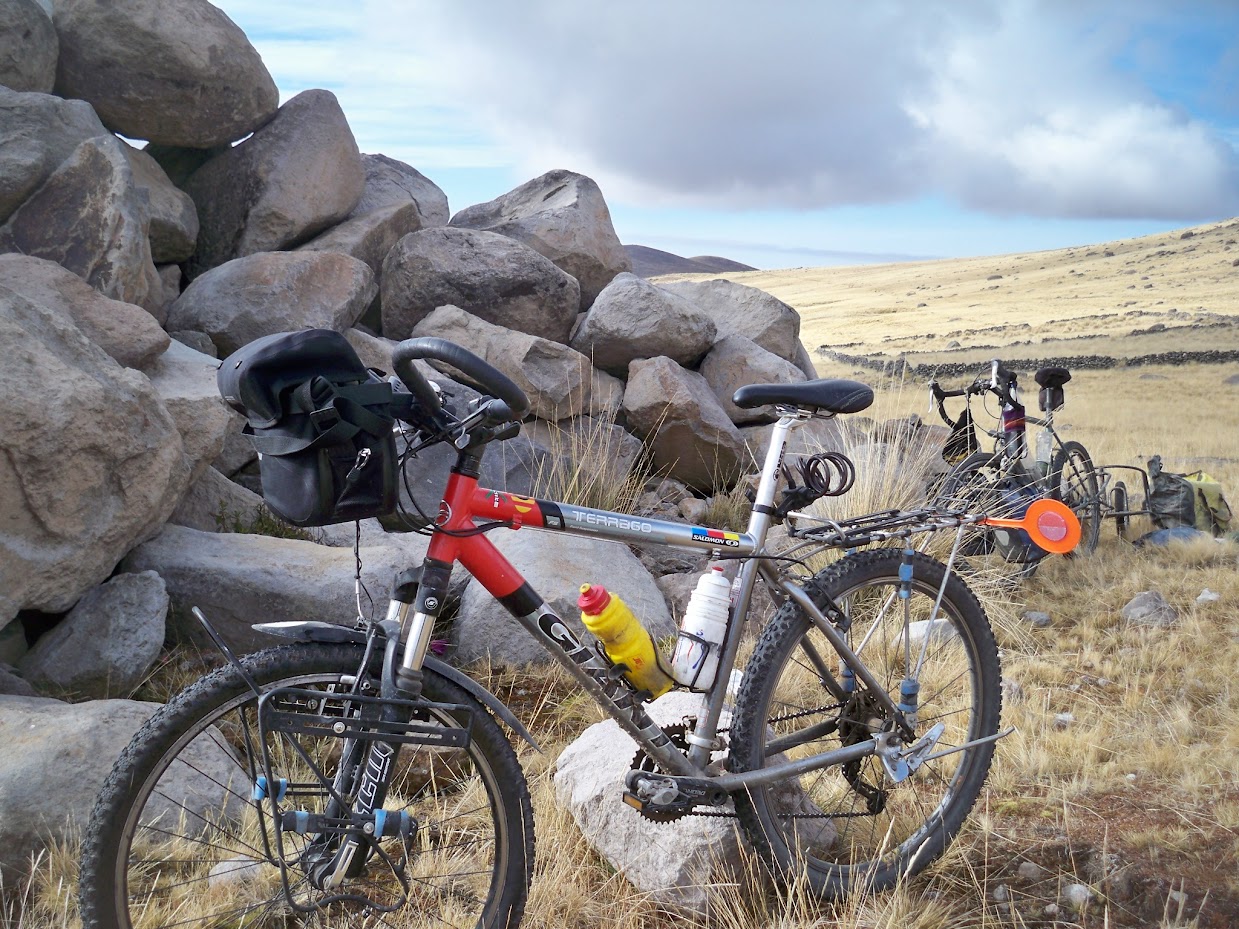
Moreover, rim brakes are easier to maintain and require fewer tools and expertise than disc brakes. This can be particularly appealing to riders who prefer a more straightforward approach to bike maintenance and do not want to invest in additional tools and specialized knowledge.
For fully loaded bike tourers who want to cycle remote areas where there may be a scarcity of bike shops and parts, rim brakes are a sensible choice.
Should I choose Disc brake or rim brake FAQ
Are rim brakes better than disc brakes?
Disc brakes for bicycles are known for their superior performance and greater braking power compared to rim brakes. They provide reliable operation and consistent performance in various conditions, making them the preferred choice for cyclists seeking dependable stopping power. However, it's important to note that disc brakes can be more expensive and require additional maintenance compared to rim brakes.
Do pros prefer rim brakes?
Yes, pros prefer rim brakes for the majority of their applications. While disc brakes may have advantages in certain situations, pro riders have proven that rim brakes can handle almost any terrain or race situation with great success.
Do pro cyclists use disc or rim brakes?
It's clear that professional cyclists use both disc and rim brakes depending on their preference. Disc brakes are becoming increasingly popular for road cycling, however some professionals still prefer the control and power of rim brakes. So you can be confident whether you choose disc or rim, you're in good company with the pros.
Are rim brakes worth it?
Rim brakes have been the standard choice for bicycles for many years and have proven to be effective and reliable in most cycling scenarios. They are typically more affordable, lighter in weight, and easier to maintain compared to disc brakes. Rim brakes also offer a wide selection of brake pad options and are compatible with a variety of wheelsets. However, it's important to consider that rim brakes may have limitations in wet or muddy conditions, as they can be less efficient at clearing water or debris from the braking surface.
 – Dave Briggs
– Dave BriggsDave is a travel writer originally from the UK, and now lives in Athens Greece. As well as writing this guide comparing disc brakes with rim brakes, he's written many more blog posts offering tips and advice for travelers. Follow Dave on social media for more Greece travel insights: